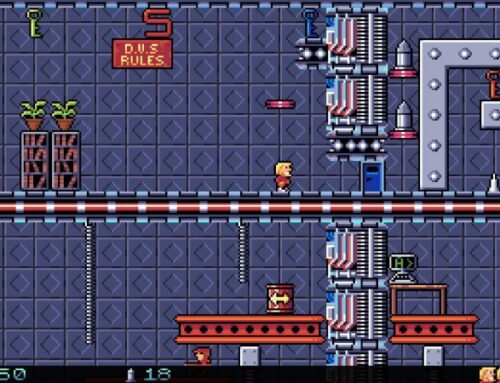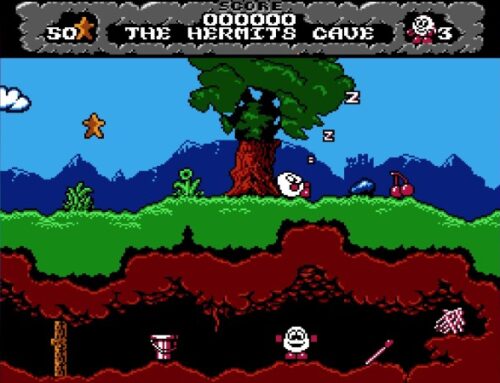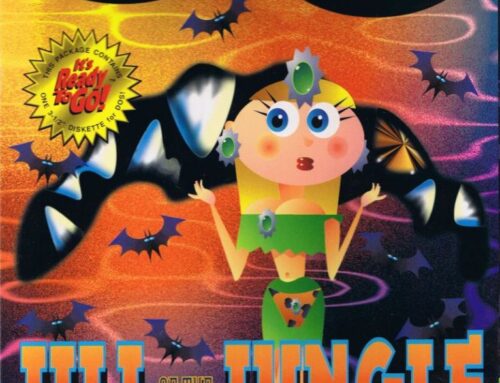Castlevania II: Simon’s Quest is a remarkable game in a lot of ways. While it has plenty of detractors — some of whose complaints are justified to a certain degree — it’s also an absolutely fascinating game to contemplate when you consider the direction that the series went in its later years.
As previously noted, I’d not spent a substantial amount of time with the Castlevania series as a whole up until the recent Castlevania Anniversary and Advance Collections. And as such, I was keen to check out what was seemingly one of the least well-regarded Castlevania titles out there — and one that was extremely ambitious for its time of release.
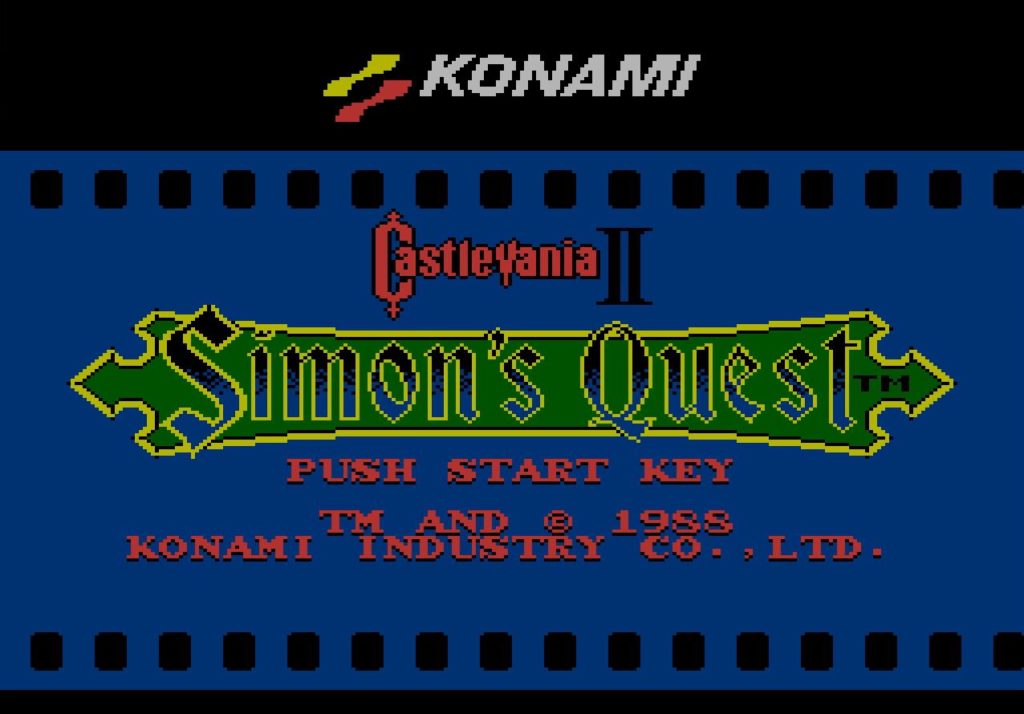
Castlevania II: Simon’s Quest (Castlevania II hereafter) is a direct sequel to the first game; none of the jumping around in time that later installments do. Nope; here, you’re once again in control of Simon Belmont as he wields the legendary Vampire Killer whip, only this time he’s not infiltrating Dracula’s castle to take down the legendary Count. He already did that, after all.
This time around, Simon is trying to save himself. It seems that his battle with Dracula in the first Castlevania left him with a rather pesky curse that is probably going to kill him at some indeterminate point in the future, and it comes to his attention that if he were to gather up various pieces of Dracula’s body (which, naturally, have recently been scattered throughout several nearby mansions) and set fire to them, he’ll probably feel a whole lot better. Would that it were so straightforward to solve one’s personal problems in this modern age.
Anyway, Simon starts in a local town armed only with Vampire Killer, 50 hearts (used as currency rather than ammunition here) and three lives to his name. And immediately from this unassuming opening, Castlevania II makes it abundantly clear that we’re in a very different sort of game.

For those of you who thought that Symphony of the Night was the first Castlevania title to take on the open-structure 2D platformer format, I’m afraid that you have been grossly mistaken. Castlevania II was, in fact, the first of the Castlevania titles to take on this structure, albeit in a somewhat more simple format than its 32-bit successor.
Yes, as soon as you take control in Castlevania II, you’re free to go where you will, and herein lies an interesting point. You remember how back during our exploration of the first Castlevania I mentioned how certain modern action games (particularly From Software’s popular Souls games) were the natural result of gradual evolution from Castlevania’s slow-paced, deliberate mechanics? Turns out that Castlevania II also clearly had something of an impact, too, though in this case it’s the overall structure and design of the game that got carried forward somewhat.
Let’s use Demon’s Souls as an example here.
Early in Demon’s Souls, you find yourself atop a castle walls, with several possible routes you can go. Which way do you go? Nothing seems to immediately indicate that one way or the other is “better”, so you head off in one direction. Shortly afterwards you find yourself confronting a very powerful knight who most certainly does not hesitate to introduce your squishy bits to his pointy friend Mr Stabby.

The more stubborn among us would, at this point, throw ourselves against this powerful opponent at least a few more times before realising that the game is actually trying to tell us, through nothing more than its mechanics, that it’s probably a little early for us to be heading in this direction, and wouldn’t it be a better idea to go the other way instead?
Of course, the fun thing about Souls games is that if you’re skilled enough, you can actually overcome that challenge and head off in that direction anyway, but for your average player, it will eventually be interpreted as a signal to “go the other way”.
Castlevania II does exactly the same thing right at the very start. Rather than proceeding linearly from left to right as in the original game, you’re immediately given the opportunity to head in either direction. Head left from the starting town and you’ll be beset by powerful enemies who will probably beat you down quickly; much like in Demon’s Souls, a skilled player probably can overcome this challenge with some effort, but what the game is actually trying to tell you — again, through nothing more than mechanics — is that you should go the other way.
This continues throughout the game. At no point are you given explicit directions in Castlevania II — in fact, the manual even makes a point of saying that “some” (read: most) of the villagers you can speak with throughout your adventure are “pranksters” that will deliberately feed you false information. Latter-day series producer Koji Igarashi claimed in a 2006 interview with German publication G Wie Gorilla that all of the townspeople in the original Japanese version were liars so, assuming the manual was actually telling the truth, we got off lightly from the sound of things.
Anyway, the point is, you don’t get told where to go in Castlevania II or how to get there: you just have to explore and experiment until you find something. But you can use those game mechanics to figure out if you’re heading the right way, and here’s where the game’s RPG elements come into play.

Generally speaking, if you’re gaining experience points from enemies but they’re not horrendously difficult to defeat, you’re where you “should” be for an optimal run. If you’re killing everything in one hit, it’s time to move on somewhere else. And if everything is taking four or five hits, you should maybe consider either levelling up or upgrading the Vampire Killer.
The game also gates a few areas off in way that will be familiar to fans of Symphony of the Night and beyond: the requirement to possess a particular item in order to progress. The difference here is that you’re not necessarily given any clues on how to use those items, and this can easily leave an unfamiliar player stumped.
Take the three magic crystals you acquire over the course of the game, for example. The first causes a moving platform to appear in the first mansion you come across, allowing you access to its interior rather than restricting you to the entranceway. You’ll probably discover this by accident, as it will likely be the only “equippable” item you have in that slot at this point in the game.
The second, blue crystal is more obtuse, however. This crystal is used to descend beneath the waves of a lake and continue onward, but it’s not just a case of being able to jump in the water and survive — oh no. In order to “use” this crystal, you have to equip it, and then kneel down on the bank of the lake until the screen scrolls down slightly, revealing platforms you can reach beneath the surface. At no point are you given any indication that the crystal can be used in this manner.
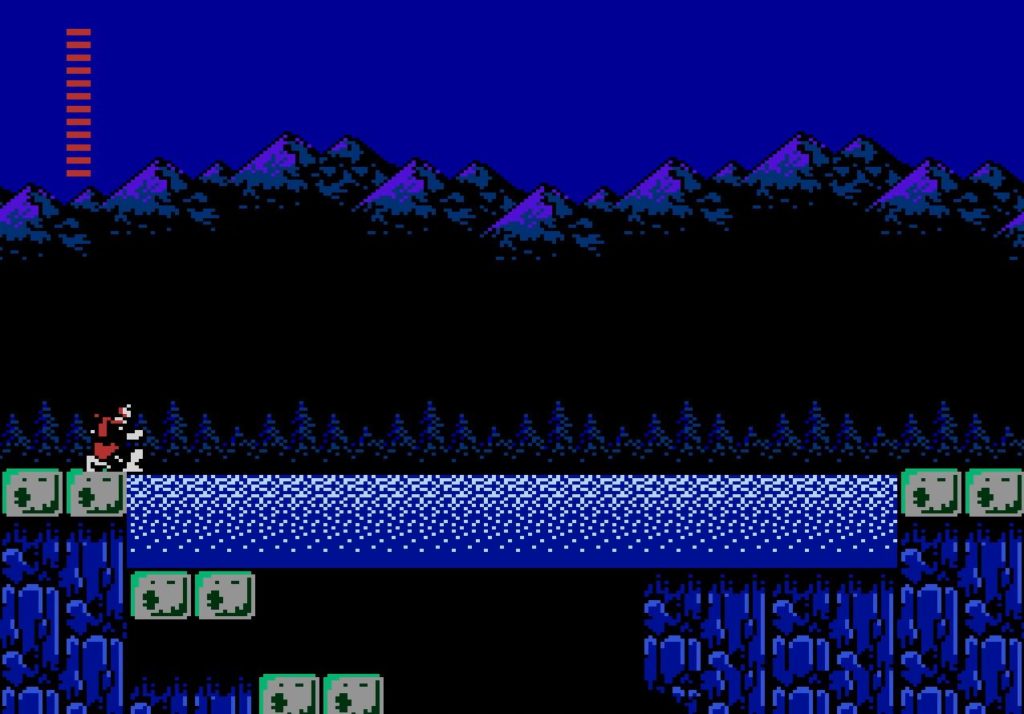
Beyond that, there’s also a red crystal, which the manual says you’ll need in order to get into Dracula’s castle at the end of the game, but which it doesn’t mention is capable of summoning a whirlwind if you kneel at the base of a particular cliff.
Or how about the garlic you can buy in several of the towns? The manual simply says that dropping this in front of an enemy will weaken it significantly, which is fair enough. But it’s not especially practical to use as a weapon, since you just drop it rather than throwing it, and you’re very limited in how many you can carry.
The reason for this is that it’s not intended for use as a weapon at all; rather, if you put it down in the right place in the two graveyards in Castlevania II’s world, you’ll summon a gypsy who will provide you with either the silver dagger subweapon or a silk bag, the latter of which allows you to carry more invincibility-conferring sprigs of laurel.
Neither of these items are essential to complete the game, but they’re nice to have. But there’s one case in particular that is widely cited as a point in the game where many players get completely stumped as to what to do next, and that’s the ferryman.

Hop on the ferryman’s boat and he’ll carry you across the river. Makes perfect sense. On the other side of the river is a town and a bit more of the world that eventually seems to conclude in an impassable dead end. Eventually you’ll come back this way to use the aforementioned red crystal to summon a whirlwind, but when you first stumble across it, you’ll feel like you’ve quite literally hit a wall.
Instead, you need to talk to the ferryman while holding Dracula’s heart, at which point he’ll take you somewhere completely different. The manual explains this as him taking you somewhere “based on the body parts you possess”, implying that you simply need to be carrying the right parts, but no; you need to actually have it equipped.
This is counter-intuitive because the heart, by itself, is an otherwise completely useless item (despite the manual’s terrible pun that claims “the heart attacks”!). Dracula’s rib, meanwhile, which you acquire in the first mansion of the game, acts as a shield that can deflect projectiles, so it’s pretty unlikely you’ll think to unequip this in favour of something apparently useless. But that’s what you need to do, and you won’t progress if you don’t.
I have a theory about this, and it relates to the fact that these games came out before the Internet was a thing. Today, it’s a simple matter of looking up a walkthrough online and immediately being able to find out what you’re supposed to do. But back when these games were originally released, they were intended to keep people busy for a long time — and moreover, get people talking about them, in turn making more people want to try them.

In other words, a lot of these games were designed with the expectation that players would talk to their friends about them, exchanging strategies or secrets they’d discovered, helping to generate buzz about the game and perhaps convincing their extended circle of friends to try the game out in the process.
Of course, this theory relies on people actually being able to find out the more obscure secrets (such as the garlic thing) in the first place, and that’s where the specialist media often came in. Often, you’d find a month or two after a big release had come out, at least one of the monthly magazines would print a guide or some tips for that game, helping to sow those seeds of knowledge and gradually spread them around through friendship groups and little communities.
The side-effect of all this was that if you did, through experimentation or pure accident, find yourself discovering one of these secrets for yourself, you felt absolutely on top of the world and could quite feasibly, depending on how nerdy your friendship group was, find yourself respected as a fountain of knowledge on the game in question. Hell, even if you were the first person to read a guide in a magazine and be able to beat a seemingly insurmountable challenge before any of your friends, you’d still feel like a big ol’ badass.
Have we lost that today? In some respects, yes; more often than not, mere hours after a game has been released, there are already walkthroughs, FAQs and YouTube videos spoiling every inch of it online. On the other hand, though, game designers have got significantly better at making games challenging in ways other than indecipherable obtuseness.

And to be fair, the more frustratingly obtuse aspects of Castlevania II don’t actually rear their ugly heads all that often, and once you know what to expect and what to experiment with if you’re stuck, you can generally make fairly constant progress. As we’ve seen already, the biggest pro-tip worth knowing is simple: if you hit what appears to be a dead end, try equipping whatever coloured crystal you have and kneeling down for a few seconds, as this is the way to proceed on three separate occasions in the game.
There are also a few missable things that don’t really affect your final enjoyment of the game. I never found the right graveyard in which I was supposed to drop one of those pieces of garlic in order to get the Silk Bag from the gypsy, for example, but it turned out that four pieces of invincibility-conferring laurel were more than enough to proceed through the few unavoidable poison marshes you encounter in the game.
I personally finished the game after 24 in-game Horrible Nights to Have a Curse, which means I got the “worst” ending, in which Dracula is defeated (after a woefully anticlimactic battle in a strangely empty Castlevania), but Simon dies. This actually feels entirely in keeping with the atmosphere that Castlevania creates, and so it’s not a particularly unsatisfying ending — although it would have been rather unusual at the time of original release.
But indeed, to continue the pattern it’s established pretty well by this point, Castlevania II doesn’t give you any indication that there are two other possible endings that it is possible to achieve according to how quickly you beat it — there’s no end-of-game score, timer or letter grade as we might get in more modern titles.

Could I have done it faster? Absolutely. There were several points in the game where I deliberately engaged in grinding to advance Simon to the next experience level — though to be honest, I’m not 100% sure how helpful that was in the long term. Surprise, surprise: the game doesn’t tell you any of Simon’s vital statistics at any point aside from his maximum amount of life.
From casual observation, it seems that some level-ups increase the length of Simon’s life bar, while others increase his defense; by the end of the game (level 5, I think?), I was able to take hits from some enemies without the life bar reducing at all, presumably meaning I had taken a “fraction of a HP” worth of damage.
I could have also skipped some of the optional items. I didn’t need to go and get the diamond subweapon (and indeed I didn’t use it at all), and nor did I need the final Flame Whip upgrade for the Vampire Killer. They were nice to have, though, and as I recall both of them were at least vaguely on the way to where I was going anyway, so skipping them probably wouldn’t have saved that much time anyway.
I actually rather enjoyed taking my time over the experience, though. One thing I’ve become quite fond of over the years is when a game allows you to “method act” the protagonist, and Castlevania II is a good early example of this at work.
What do I mean by “method act”? Well, quite simply I’m talking about contemplating how your character would live his life in that game world, and then making use of the mechanics accordingly to simulate his full existence, not just the exciting bits. Taro Yoko’s classic Nier is one of the best examples of this, with the majority of the sidequests in the game being mindless busywork in a depressing, dying world, but engaging with this side of things — completely optionally, I might add — gives you a much stronger sense of the overall context in which everything is unfolding.

In the case of Castlevania II, we’re not talking about anything quite so grandly ambitious or artistic, but we do get a feeling for how a figure such as Simon Belmont might have lived during his journey through Transylvania, most notably when the night falls.
When night falls in Castlevania II, the various towns you encounter along the way close up, with all the NPCs retreating to their houses and all doors becoming impassable. Zombies take to the streets, having the run of the place; they’re never shown actually doing anything other than shambling back and forth, but a bit of imagination can give you an idea of what they might get up to given the opportunity.
So what’s a fully certified undead killer to do? Take to the streets himself and whip those zombies good and proper, of course! This is something I found myself doing quite a few times over the course of the complete game, since I would inevitably cross the threshold of a new town right as day was turning into night, meaning an evening of zombie-whipping before I could buy any items, get healed at the church or indeed do anything useful. Such is the life of a vampire hunter.

All in all, I had a good time with Castlevania II. I might even return to it sometime to see if I can get a better time, now I know my way through it. And I’d encourage you, yes you, to check it out if you’ve ever been curious about the origins of the open-structure 2D platformer format the later Castlevania titles relied on so heavily; while Simon’s Quest certainly has its cumbersome aspects, go in forewarned and ready for those things and you will almost certainly, like me, have an enjoyable journey through Transylvania.


